Mammals on Romney Marsh
Some mammals can fly and live in caves, some live in the ocean, whilst others live underground. The following mammals can be found on the marsh:

The smaller of our two seal species, Common Seals (also known as Harbour Seals) are more commonly found around sheltered shores and estuaries, where they haul out on sandbanks and beaches. They are the most widespread of the pinniped family(walruses, eared seals, and true seals), with the UK boasting five percent of the world's population.
When out of the water, they sometimes hold their body in a curved 'banana' position, with their head and tail both in the air at the same time. Like Grey Seals, they feed on fish, but also eat squids, whelks, crabs and mussels. The young are born during the summer.
Mostly solitary animals, small groups do form when they haul-out onto rocky shores and beaches to bask, mate and moult. At sea common seals have much to fear from killer whales and great white sharks. Common seals don't chew their food, it is just torn into chunks or even swallowed whole.
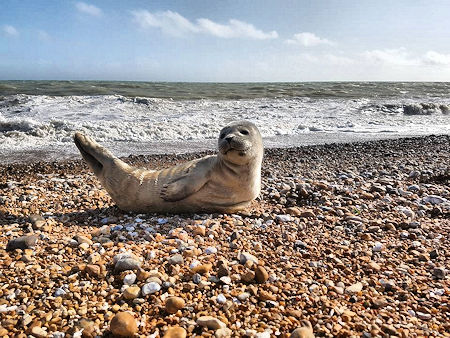
Seal pub at Dungeness August 2017 (Ack. 52)

The fox is a remarkably adaptable and successful animal found, where food is plentiful, in almost every habitat. It is a success because it is willing to eat almost anything and has become particularly adept at surviving alongside man in farmland and urban areas.
On Romney Marsh, foxes can be found on Greatstone Dunes, Dungeness, on the farmland, on the streets and all over the Marsh.
With its bushy tail, large ears and narrow muzzle, the fox is unmistakable. The coat colour can be extremely variable - usually reddish-brown on top with lighter undersides, but much darker or even silvery forms are not uncommon.
The mating season is December to February when the vixen can be heard at night uttering its eerie, high pitched scream. Four or five cubs are born in the Spring and the female fox stays with them in the 'earth' for two weeks, fed by the dog fox. They remain with their mother until Autumn when they disperse to find territories and mates of their own.
The life expectancy of the fox is short; 12 - 18 months in urban areas, (58% are killed on the roads) and rarely beyond 3 years in rural areas.
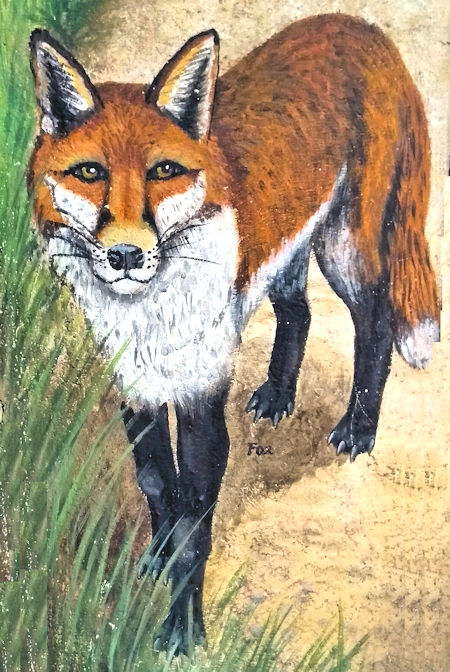
The Fox (Ack. 55)
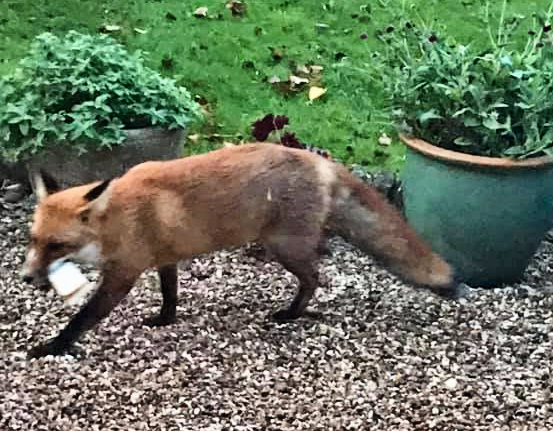
Fox on the scrounge in Dymchurch
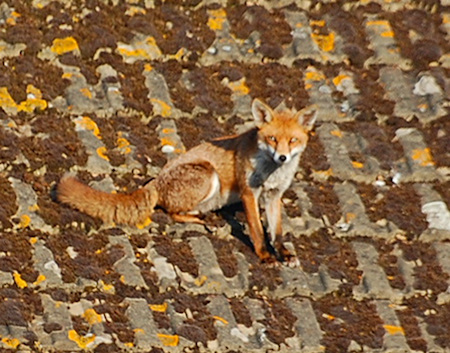
The urben fox on a roof in Greatstone

The Stoat, also known as the Short-tailed Weasel, can be found across Britain in habitats with sufficient covering and food, such as in gardens, along rivers and wetland, in woodland and by coastal and marshland. These stoats in the photo to the right were spotted at Dungeness in June 2016.
Stoats have a long slender body, with short legs; their long tail usually has a black tip. The stoat has reddish brown fur on it's back and white fur underneath; they can turn totally white in the winter. Males weigh 200-445g and are 275-312mm long, females are smaller and weigh 140-280g and are 242-292mm. Their tails range from 95 to 140mm long.
Stoats don't like to be out in the open so hunt along ditches, hedgerows and marshes. They mainly feed on small mammals like water voles and rabbits. Most of their prey are killed by a single bit to the back of the neck. When food is scarce they supplement their diet with birds, eggs and fruit. Male and female stoats live separately, marking their territory with scent.
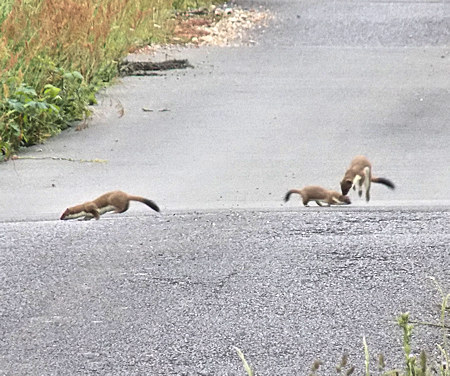
Stoats on Dungeness

Water Voles live along rivers, streams, canals and ditches, around ponds and lakes and in marshes, reedbeds and areas of wet moorland. Look out for the signs of Water Voles such as burrows in the riverbank, often with a nibbled 'lawn' of grass around the entrance.
Water Voles like to sit and eat in the same place, so piles of nibbled grass and stems may be found by the water's edge, showing a distinctive 45° angled-cut at the ends. 'Latrines' of rounded, cigar-shaped droppings may also be spotted.
They are often confused with water rat, although it only superficially resembles a true rat. Water voles have rounder noses than rats, deep brown fur, chubby faces and short fuzzy ears; unlike rats their tails, paws and ears are covered with hair. In the wild, on average, water voles only live about five months.
![]() Reference and more information
Reference and more information
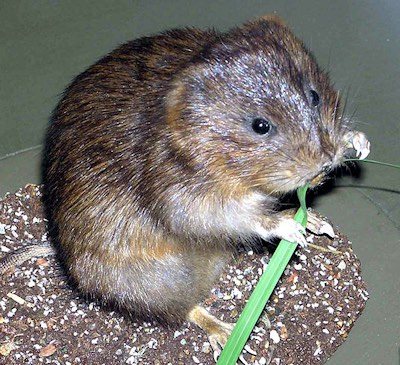
Water Vole



